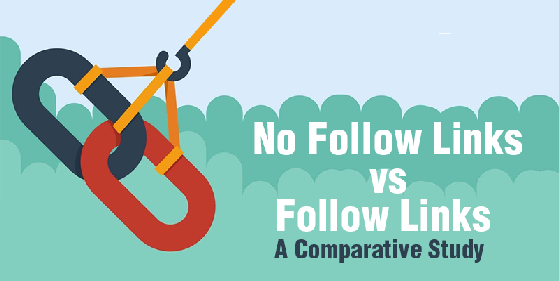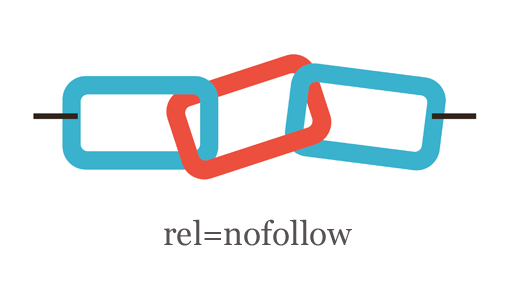I hope you enjoy reading this blog post.
If you want to get more traffic, Contact Us

Click Here - Free 30-Minute Strategy Session
Be quick! FREE spots are almost gone for this Month. Free Quote

Let’s get this straight. Most of us who are enthusiastic about SEO may not know about coding of a website. When some aspects of website coding becomes a part of SEO lingo, we struggle. No follow links and follow links belongs to this category of SEO terms that some of us find difficult to understand.
This article is all about making these two terms easy to understand by pondering in to how these two tags work and how they differ.

Click Here – Free 30-Minute Strategy Session
Be quick! FREE spots are almost gone for this Month
Within the SEO realm, any hyper linked text on an external website that points to your domain is an inbound link.
Depending on the domain where the inbound link is present, these links boost the SEO value of the page that’s linked within your domain.
Think of each of such inbound links as the SEO points you score for your website.
Every time you score an SEO point, Google (and other search engines) take a note and say, “Hey look, this site scored another point.”
As you score more and more points, your site moves higher and higher and higher in the search engines results page.
One fine day, Google will say “This site has scored enough points to earn itself a place on the first page of SERP because if so many sites are giving this one points, this site must be really informative and our search engine users will find it relevant.”
Now all the sites that have a link pointing to your site doesn’t award equal points.
It depends on the reputation of those sites too. Higher the reputation, more the points.
In SEO lingo, these points are referred to as link juice.
Link juice follows from the linking sites and in to the linked-to sites through hyper links.
Through internal linking, you could even pass this link juice within your site to other pages.
Follow links, therefore can be defined as inbound links from other domains that pass link juice to your site.

Now that you know what are follow links, it’s easier to define no follow links.
No follow links are inbound links that pass no link juice, doesn’t affect the page rank, and as result doesn’t impact the position of your page on SERP.
All links are follow links by default. If you want a particular link to be no follow link, then you must add the following HTML tag to the link:

In HTML coding language, this is a message to all search engines and simply translates to “Hey, don’t count this point.”
So why do no follow links exist, you ask? Well, in an ideal world these links shouldn’t exist.
But we don’t live in an ideal world. Do we?
So until now we have understood the purpose of follow links.
They inform search engines that a particular page is popular among many other sites in the same or somewhat related niche.
Search engines interpret this as the page being high on quality and therefore serves it to the search engine users.
Everything was going on smooth and fine until some SEO specialists got greedy and found a short cut to use inbound links to game the search results.
It was effortless to promote a page that was not deserving to be in the first page and get it there in a blink of an eye.
Soon, a separate SEO technique was gaining momentum and was termed ‘black hat SEO’.
Link building was a thriving business and it simply overtook all the good intentions that Google had to present its users with web pages that are relevant and informative.
Instead, what one got were sites that sold just about every thing under the sky.

Among the many techniques black hat SEO specialists adopted, the majority of the links came from blog post comments, Wikipedia reference links, and public discussion forums.
The blogging community was worried as the blogs no longer promoted healthy discussions as the comments sections were full of spammy links to other sites.
Bit none were affected as much as Google. Its search engine results were less than credible and users seldom found what they were looking for.
That’s when the self-styled web police stepped in. Along with Blogger’s Jason Shellen, Google’s Matt Cutts introduced the no follow tag element
With the advent of no follow links, leading blog sites such as WordPress started automatically assigning this tag to all of the blog comments.
Wikipedia followed suit and added this tag to all the reference links.
Slowly, the entire world wide web plugged all possible holes and made the internet spam free.
The point is, if black hat SEO specialists know that they won’t get a backlink from such sites, you wouldn’t bother to attempt.
So the no follow link has tremendously cleaned up the webscape and also helped search engines win the trust back from their users.
You will still find external links in blog comments. However, these days such links are genuine and not with an intention of gaining backlinks.
If you are a webmaster, you must be wondering when to use a no follow link and when to use a follow link.
As a rule of thumb, these are the general section of the internet where no follow links are present:
There are webmasters who override the no follow tag to encourage visitors to comment.
They are willing to take the risk in turn for increased interaction and that’s completely their discretion.
Yes they do! Link juice passed through inbound links are not the only criterion to improve page rank.
No follow links still provide highly valuable referral traffic to your site. This is also one of the factors that Google considers.
If you choose the blogs properly, you know the ones written by leading authorities in your domain with great following, you can get great traffic to your site.
Just make sure that you track the blog and become one of the earliest to comment.
Make sure that to add some value to the topic and encourage discussion.
Search engines today are also looking at social signals. Although the links there are no follow links, the social signals they generate is valuable.
Combined with a great content marketing strategy, this can be an effective tool for branding as well.
If you can get to convince Wikipedia that your business deserves a page there, then go for it.
They are highly choosy about the articles they publish and look for highly specialized content.
If you can create a good piece of article, nothing beats the links from such sites, even if they are no follow links.
A fellow SEO professional, Gianluca Fiorelli, noted that while researching about travel sites to Patagonia, he stumbled upon a site that had a Wikipedia link.
Here’s what he has to say:

With a high domain authority, and a reputation of filtering out those looking for SEO, this site can give you some of the most profitable do follow links.
Open the web page in Chrome browser and hit Ctrl+U on your keyboard.
This opens the source code in a new tab. Within the source code, hit Ctrl+F. This open a small search box.
Type in Nofollow. And you will see all the links incoming to your page with a no follow tag.
If you are an SEO enthusiast and want to track no follow and follow links on the go, you have several browser add-ons.
Some of them are:
Gone are the days when SEO agencies could buy you backlinks by the truck load.
They even named it link building. These days the paradigm has shifted to link earning.
Link earning is all about creating genuine content that’s informative and relevant to your target audience.
You should create such awesome content that your subscribers should share it and eventually get shared by reputable websites with high domain authority.
You also take the guest blogging approach.
Find websites in your niche that accept guest blogging.
This is a two way street. While you are creating great content for their website for free, they are willing to give that much coveted back link.
To summarize, follow links pass on link juice and no follow links doesn’t.
However, that should not keep you from pursuing no follow links as they provide other SEO values.
From gaining referral traffic from blog comments to gaining social signals on the social network, use this tag wisely and you will see the results for sure.
Do you a question about any point mentioned in this article?
Feel free to use the comment section below and I will be glad to answer them for you.

LEAVE A REPLY